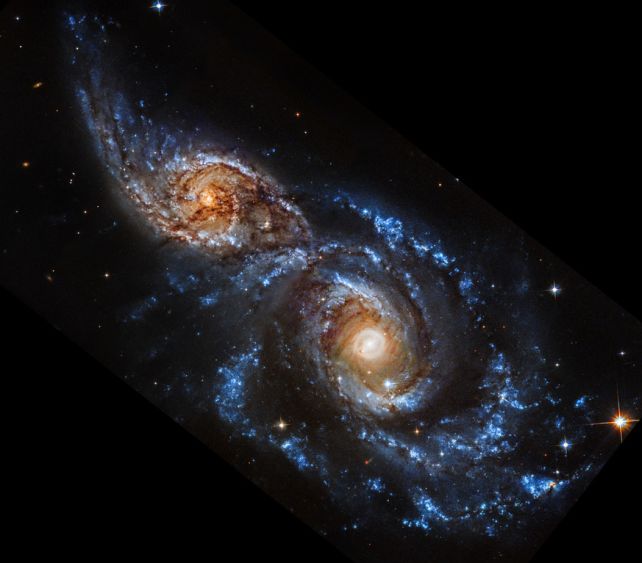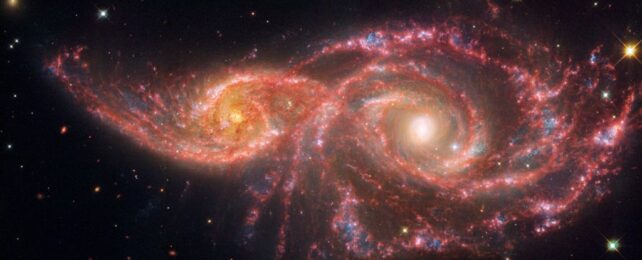"If you gaze for long into an abyss," declared German philosopher Friedrich Nietzsche in 1886, "the abyss gazes also into you."
He could not have predicted, perhaps, how literally his words would be interpreted, nearly 140 years later; yet, here we are, gazing upon an image taken across a space-time gulf of 80 million light-years that appears to depict a pair of menacing, baleful eyes, gazing right back.
It is not, of course, a pair of eyes. It's a pair of galaxies, named NGC 2207 and IC 2163, caught by two space telescopes, Hubble and JWST, in the process of colliding. This interaction will one day produce one large galaxy, with one supermassive black hole at the core.

A galaxy merger is a long-term process. It's not a straightforward boom; rather, the galaxies swing around each other in a slow cosmic dance before finally coming together. NGC 2207 and IC 2163 have already had one brush past each other, millions of years ago; now they're swinging around again.
The stage of the merger we see now is still a fair way from a united end. Both galaxies still have a discernible spiral structure – but that doesn't mean their effect on each other is negligible. As they are pulled together by their mutual attraction, their interaction is causing both galaxies to light up with star formation.
This is because the interstellar gas clouds in both galaxies are being shocked and compressed; stars form when dense clumps in these clouds collapse under gravity to form the seeds of baby stars, spinning and growing by slurping up material from the gas around them.

Each of these galaxies produces dozens of Suns' worth of stars every year. By contrast, the Milky Way is relatively sedate, with less than a handful worth of Suns.
And where star birth is rife, so too is star death. The giant stars that bubble up in star-forming regions have short lifespans and explode in supernovae that also shock and compress the gas around them, leading to a chain reaction of birth, death, and birth again.
These regions of star formation can be seen in the Hubble image in glittering, bright, pale blue, imaged in ultraviolet; meanwhile, JWST's mid-infrared camera excels at capturing the distribution of dust, in intricate cobwebby filaments scattered throughout each galaxy.
Maybe we need an addendum to Nietzsche's famous quote: and sometimes, perhaps, you get a glimpse into the fascinating alien workings of something so much more vast and more ancient than your tiny, insignificant little self.
